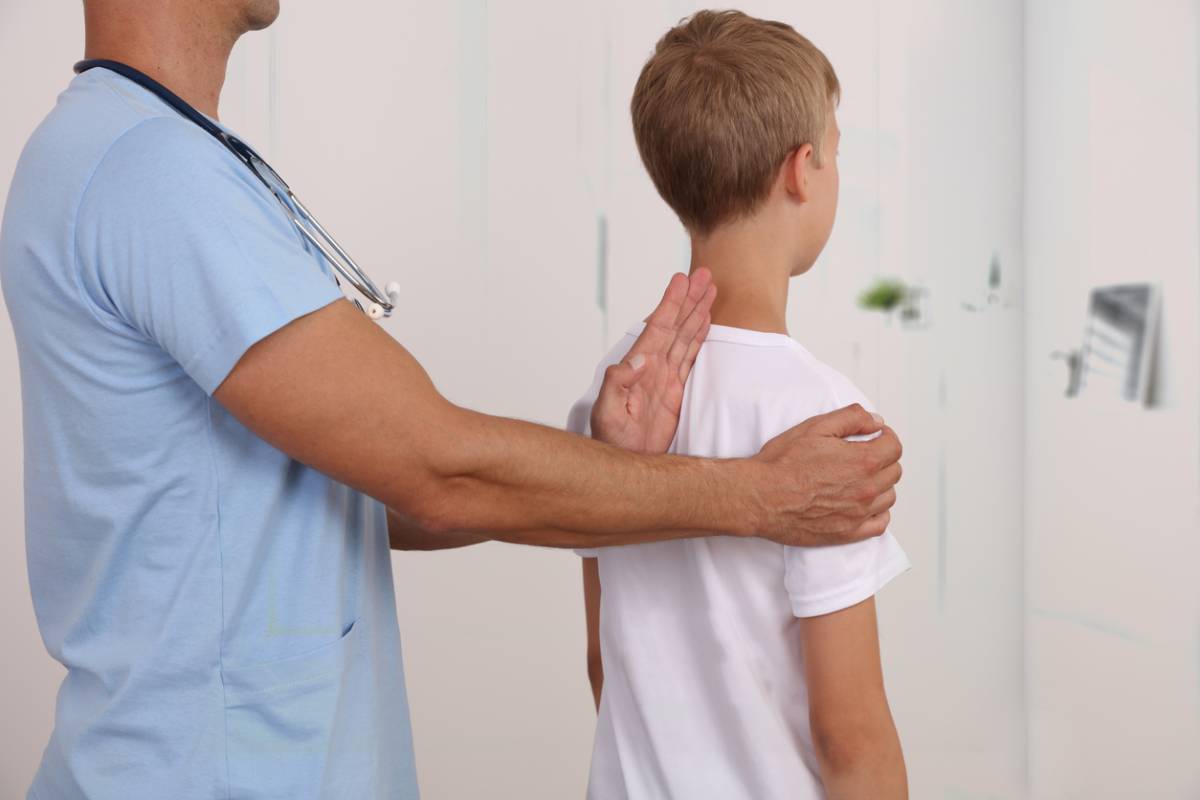Back pain in children and adolescents occurs more frequently than previously thought (Bernstein, Haus). Incidence depends on age and physical activity, but it may reach up to 24-36% of the pediatric population (Haus). While back pain in adults has been extensively studied, leading to its recognition as a leading cause of disability and a large burden on the healthcare system, back pain in children has received relatively less attention (Bernstein). Current data suggests that it is more likely to be caused by an identifiable, specific underlying cause than for adults; furthermore, some causes of pediatric back pain are serious conditions warranting rapid treatment (AAOS, Bernstein).
There are several mechanical problems that can arise from physical activity or physical habits, which are often acute and treatable. Haus and Micheli (2012) propose that sports-related injuries contribute to the surprisingly high incidence of pediatric back pain. As is generally the case within the musculoskeletal system, acute injuries or chronic overuse can damage joints and cause pain (AAOS, Haus). The combination of intensive sports training and anatomical changes due to growth can place excessive pressure on the spine and back muscles (Haus). This type of back pain can usually be managed with rest, NSAIDs if needed, and progressive rehabilitation (AAOS, Haus).
One concern, especially with children, is that heavy backpacks may overload the back. However, there are conflicting points of view – the American Academy of Orthopaedic Surgeons lists carrying a heavy backpack as a cause of muscle strain and imbalance, but a study found no association between heavy backpacks and back pain in school-age children (Haus, AAOS).
There are also a number of other spinal conditions that can cause back pain in children. While one study found that lumbar strain or spasm was the most common diagnosis given to adolescents with low back pain (at 9%), the next most common were scoliosis (5%), degenerative disc disease (2%), and disc herniation (1%) (Yang). Scoliosis can increase the risk of other back injuries due to imbalanced load during sports. Degenerative disc disease and disc herniation are more common in pediatric athletes than pediatric non-athletes – this population and their parents/guardians should be aware of the risks and consider whether instances of back pain may have underlying pathology instead of being an acute injury (Haus). Other potential causes of pediatric back pain include spondylolysis (stress fracture), spondylolisthesis (slipped disc), and more rarely, infection or tumor (AAOS, Bernstein, Haus, Yang).
In many cases, pediatric back pain can be managed conservatively with good outcomes. However, there are key factors that should prompt urgent care-seeking: back pain in children aged 4 or younger and back pain with fever, weight loss, nighttime pain, or weakness (AAOS, Berstein, Haus).
Treatment for children with back pain varies depending on symptoms, diagnosis, and individual-specific factors. Many musculoskeletal injuries and conditions can be managed with a combination of rest, anti-inflammatory medication, and physical therapy. Surgery may be required for some cases of spinal fracture, herniated disc, progressive spondylolisthesis, severe scoliosis, and tumor (Berstein, Haus). Chiropractic management may also be appropriate: a study found that 62% of a group of pediatric patients with low back pain experienced a clinically important decrease in reported pain and 87% perceived a clinically important improvement within a 6-week treatment course. However, patients with chronic low back pain were less likely to respond within the treatment period (Hayden).
References
American Academy of Orthopaedic Surgeons. (2019). “Back Pain in Children.” OrthoInfo. https://orthoinfo.aaos.org/en/diseases–conditions/back-pain-in-children/
Bernstein, R. M., & Cozen, H. (2007). Evaluation of back pain in children and adolescents. American family physician, 76(11), 1669–1676.
Haus, B. M., & Micheli, L. J. (2012). Back Pain in the Pediatric and Adolescent Athlete. Clinics in Sports Medicine, 31(3), 423–440. doi:10.1016/j.csm.2012.03.011
Hayden, J. A., Mior, S. A., & Verhoef, M. J. (2003). Evaluation of chiropractic management of pediatric patients with low back pain: A prospective cohort study. Journal of Manipulative and Physiological Therapeutics, 26(1), 1–8. doi:10.1067/mmt.2003.11
Yang, S., Werner, B. C., Singla, A., & Abel, M. F. (2017). Low Back Pain in Adolescents. Journal of Pediatric Orthopaedics, 37(5), 344–347. doi:10.1097/bpo.0000000000000653
